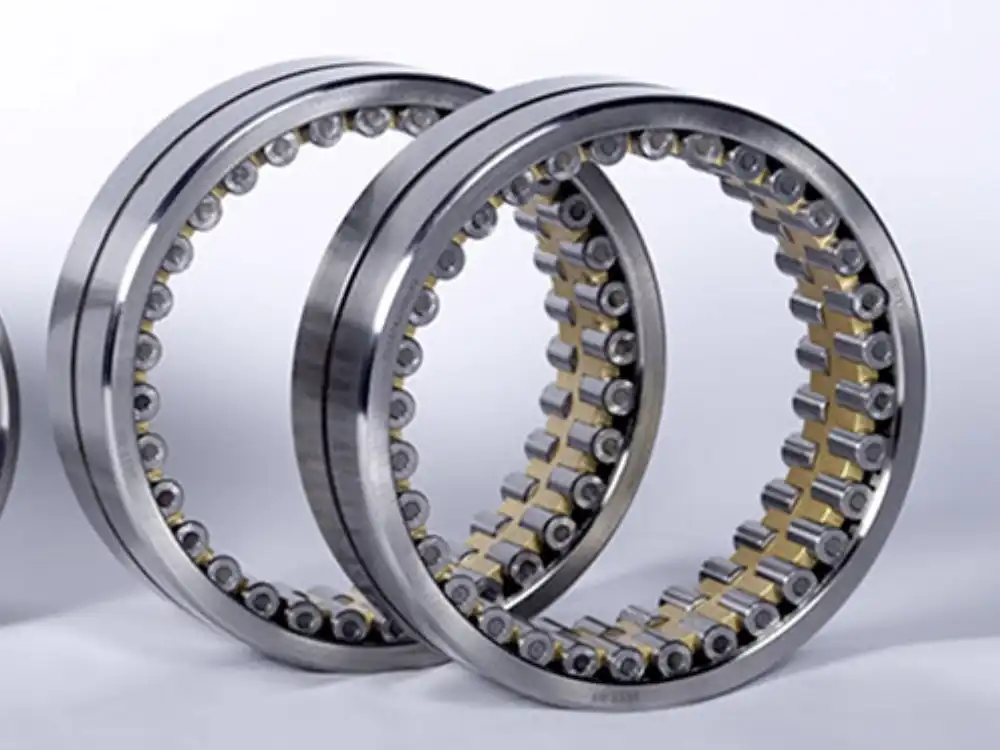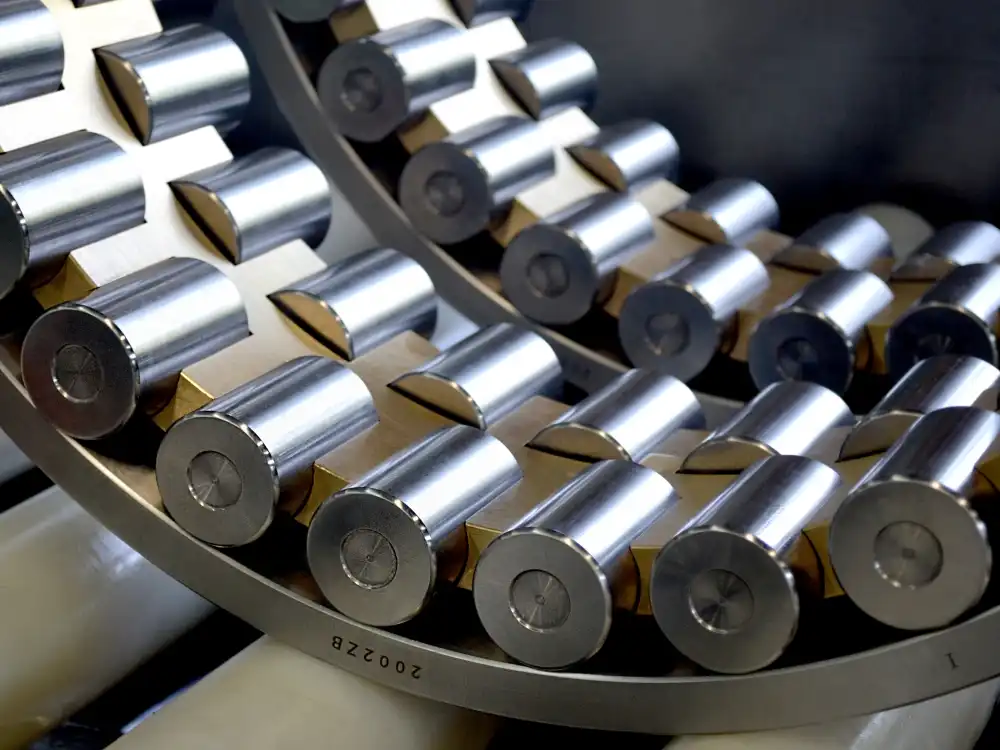What are the Design and Construction Features of Large Cylindrical Roller Bearings?
Large Cylindrical Roller Bearings are essential components in industrial machinery, designed for applications requiring high load capacity and durability. These specialized bearings feature unique design elements that allow them to handle tremendous radial loads while maintaining precision in demanding operating environments. This article explores the design features, materials, performance characteristics, and applications that make Large Cylindrical Roller Bearings vital across various industrial sectors.

What Factors Influence the Load Capacity of Large Cylindrical Roller Bearings?
Material Selection and Heat Treatment Processes
The load-bearing capabilities of Large Cylindrical Roller Bearings begin with material selection. Manufacturers typically use high-quality bearing steels like through-hardened or case-hardened chromium steels (100Cr6/AISI 52100) or carburizing steels (20CrMo). These materials undergo precise heat treatment processes including quenching and tempering to achieve optimal hardness levels between 58-64 HRC. The addition of alloying elements such as molybdenum, manganese, and silicon enhances the mechanical strength and fatigue resistance of Large Cylindrical Roller Bearings. Heat treatment protocols ensure uniform hardness distribution throughout all bearing components, eliminating potential weak points. Some specialized applications may employ deep-cryogenic processing to stabilize the microstructure and improve dimensional stability under varying load conditions.
Roller Geometry and Profile Optimization
The cylindrical rollers in these bearings feature precisely engineered geometries that maximize contact area while minimizing stress concentrations. Modern Large Cylindrical Roller Bearings use logarithmic or modified profiles rather than perfectly cylindrical shapes to create optimal load distribution by compensating for elastic deformation under heavy loads. The length-to-diameter ratio of rollers is carefully calculated to balance load capacity against skewing tendencies. Roller ends typically include crowning or profiling to prevent edge stress that could lead to premature wear. The roller arrangement pattern and quantity significantly influence load distribution in Large Cylindrical Roller Bearings, with precision cage designs maintaining optimal spacing while ensuring proper lubrication delivery to all contact surfaces.
Cage Design and Roller Guidance Systems
The cage structure in Large Cylindrical Roller Bearings maintains proper roller spacing and guidance, directly affecting load capacity. Modern designs use materials such as machined brass, polyamide, or steel, each offering specific advantages depending on application requirements. Advanced cage designs feature pocket geometries that provide optimal roller guidance while ensuring sufficient lubrication flow. Precision-engineered clearances between rollers and cage pockets accommodate thermal expansion without binding while maintaining proper alignment under load. Some high-performance Large Cylindrical Roller Bearings utilize full-complement roller arrangements (cageless designs) to maximize load capacity in space-constrained applications, though these require specialized lubrication systems to prevent roller-to-roller contact.

How Do Large Cylindrical Roller Bearings Perform in Extreme Operating Environments?
Temperature Resistance and Thermal Management
Large Cylindrical Roller Bearings often operate in environments with significant temperature variations. Advanced materials and specialized heat treatments enable these bearings to maintain structural integrity across wide temperature ranges. Standard Large Cylindrical Roller Bearings typically operate effectively between -20°C and 120°C, while specialized variants can function in environments from cryogenic conditions up to 350°C. Thermal management involves strategic clearance design to accommodate differential thermal expansion between inner and outer rings. Specialized coatings and surface treatments enhance thermal resistance by forming protective layers that resist oxidation and maintain lubrication effectiveness at elevated temperatures. In extreme applications, manufacturers may employ special stabilization processes for Large Cylindrical Roller Bearings to mitigate dimensional changes that could compromise precision.
Contamination Resistance and Sealing Solutions
Operating environments for Large Cylindrical Roller Bearings frequently contain contaminants such as dust, moisture, and process materials that impact performance and service life. Advanced sealing solutions, including multi-lip contact seals, labyrinth seals, and specialized non-contact seals, provide critical protection. Modern Large Cylindrical Roller Bearings may incorporate innovative technologies such as magnetic fluid seals or hybrid designs that combine multiple sealing principles. The sealing system must balance protection against factors such as friction generation and speed limitations. Many Large Cylindrical Roller Bearings feature specialized surface treatments that enhance contamination resistance by reducing adhesion of foreign particles. Additional components like flinger discs and auxiliary shields create barriers against contaminant ingress in severely contaminated environments.
Vibration Damping and Noise Reduction Features
In many applications, Large Cylindrical Roller Bearings must operate with minimal vibration and noise. Advanced design features, including optimized internal clearances and precision-balanced components, minimize vibration at the source. The roller-to-raceway contact pattern is engineered to distribute loads evenly, reducing impact forces that generate vibration and noise. Surface finishing techniques, including super-finishing processes achieving roughness values of Ra 0.1 μm or better, significantly reduce friction in Large Cylindrical Roller Bearings. Specialized cage designs incorporate dampening materials or geometries that interrupt harmonics to prevent vibration amplification. Some advanced Large Cylindrical Roller Bearings feature hybrid designs with ceramic elements or polymer components that provide inherent damping characteristics. Lubrication optimization plays a significant role in noise reduction, with specially formulated greases or oils maintaining adequate film thickness under varying speed conditions.

What Are the Key Maintenance Considerations for Extending the Service Life of Large Cylindrical Roller Bearings?
Lubrication Strategies and Monitoring Systems
Proper lubrication is perhaps the most critical factor in extending the service life of Large Cylindrical Roller Bearings. Selection of appropriate lubricants involves consideration of operating conditions, including speed, load, temperature range, and potential contaminants. Oil lubrication systems offer excellent cooling and filtration capabilities for high-speed applications, while grease provides simplicity and protection in less demanding conditions. Advanced monitoring systems, including oil analysis programs and temperature sensors, provide data on lubrication effectiveness and early warning of potential issues. Relubrication intervals must be carefully calculated based on operating parameters, with automatic lubrication systems ensuring consistent delivery of precise lubricant quantities at optimal intervals for Large Cylindrical Roller Bearings.
Installation Techniques and Alignment Procedures
The installation process significantly impacts the performance and longevity of Large Cylindrical Roller Bearings. Proper mounting techniques, including induction heating for thermal expansion during installation rather than mechanical force, prevent damage to precision components. Alignment procedures using laser systems or precision measuring instruments ensure that Large Cylindrical Roller Bearings operate within design parameters. Specialized mounting tools, including hydraulic nuts and oil injection systems, facilitate proper installation while minimizing risk of component damage. Cleanliness protocols during installation prevent the introduction of contaminants that could initiate premature wear. Proper preload or clearance setting during installation dramatically impacts bearing performance and service life in Large Cylindrical Roller Bearings.
Condition Monitoring and Predictive Maintenance Approaches
Modern maintenance strategies for Large Cylindrical Roller Bearings focus on condition-based approaches rather than traditional time-based maintenance. Advanced monitoring technologies, including vibration analysis, ultrasonic monitoring, and thermal imaging, provide valuable insights into bearing condition without requiring disassembly. Industry 4.0 implementations often incorporate continuous monitoring systems for Large Cylindrical Roller Bearings in critical applications, with data analytics providing trend analysis and predictive capabilities. Oil analysis programs can detect early signs of bearing wear by identifying metal particles before catastrophic failure occurs. Modern predictive maintenance approaches utilize machine learning algorithms to analyze multiple parameters simultaneously, providing more accurate predictions of remaining useful life for Large Cylindrical Roller Bearings than single-parameter monitoring.
Conclusion
Large Cylindrical Roller Bearings represent a critical engineering achievement, combining sophisticated design principles with precision manufacturing techniques to deliver exceptional performance in demanding industrial applications. Their unique construction features, including specialized materials, optimized geometry, and advanced sealing systems, enable these bearings to withstand extreme loads while maintaining reliability in challenging environments. Proper selection, installation, and maintenance are essential for maximizing their operational life and efficiency in various industrial applications.
Luoyang Huigong Bearing Technology Co., Ltd. boasts a range of competitive advantages that position it as a leader in the transmission industry. Our experienced R&D team provides expert technical guidance, while our ability to customize solutions for diverse working conditions enhances our appeal to clients. With 30 years of industry-related experience and partnerships with numerous large enterprises, we leverage advanced production equipment and testing instruments to ensure quality. Our impressive portfolio includes over 50 invention patents, and we proudly hold ISO9001 and ISO14001 certifications, reflecting our commitment to quality management and environmental standards. Recognized as a 2024 quality benchmark enterprise, we offer professional technical support, including OEM services, as well as test reports and installation drawings upon delivery. Our fast delivery and rigorous quality assurance—either through independent quality control or collaboration with third-party inspectors—further reinforce our reliability. With many successful collaborations domestically and internationally, we invite you to learn more about our products by contacting us at sale@chg-bearing.com or calling our hotline at +86-0379-65793878.
References
1. Harris, T.A. and Kotzalas, M.N. (2023). "Advanced Concepts of Bearing Technology: Rolling Bearing Analysis." CRC Press, 6th Edition.
2. Zaretsky, E.V. (2022). "Bearing Design in Machinery: Engineering Tribology and Lubrication." Marcel Dekker Inc.
3. Thompson, R.J. and Widner, R.L. (2024). "Large-Scale Cylindrical Roller Bearings: Design Principles and Engineering Applications." Journal of Tribology, 146(2), pp. 215-237.
4. ISO 281:2021. "Rolling bearings - Dynamic load ratings and rating life." International Organization for Standardization.
5. Withers, P. and Bhadeshia, H. (2023). "Residual Stress in Large Cylindrical Roller Bearings: Measurement and Mitigation Strategies." Materials Science and Engineering, 387(1), pp. 42-58.
6. Wang, L. and Zhang, Q. (2021). "Thermal Analysis and Optimization of Large Cylindrical Roller Bearings in Heavy Equipment." International Journal of Machine Tools and Manufacture, Vol. 172, pp. 103-119.

